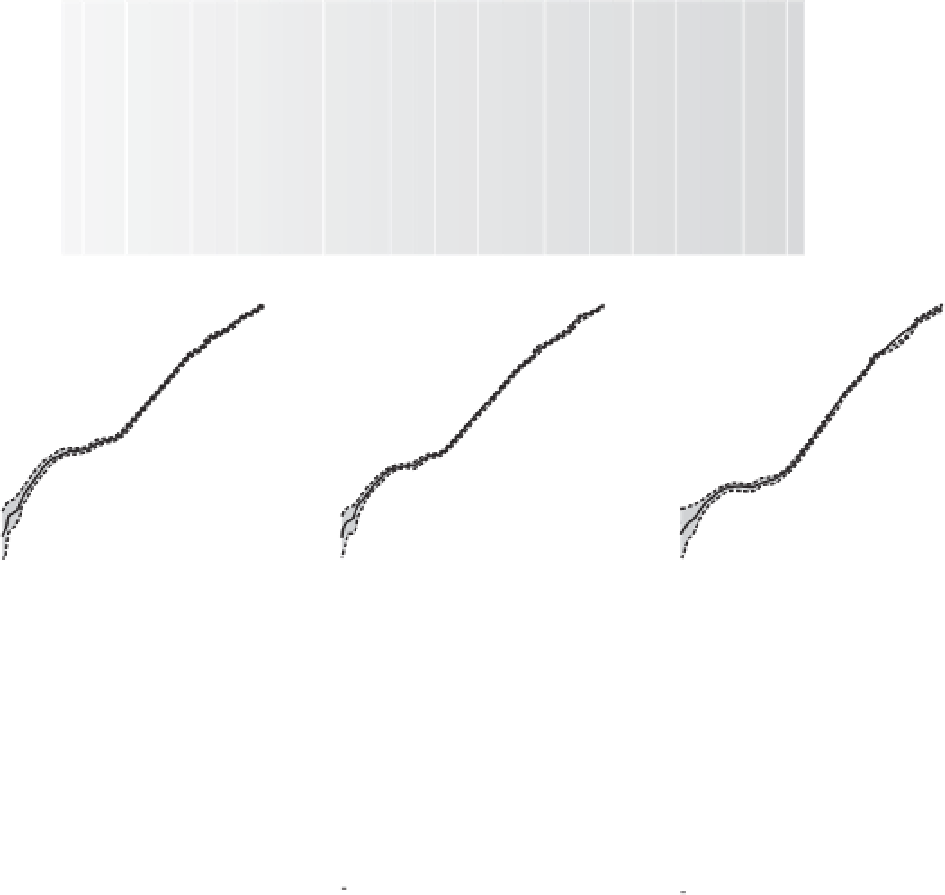Environmental Engineering Reference
In-Depth Information
Table 7.1
RIVBJ estimation results.
Location
cs 82
cs 79
cs 77
cs 73
cs 70
cs 68
a
j
,1
−
0
.
213
−
0
.
330
−
0
.
436
−
0
.
681
−
0
.
764
−
0
.
859
b
j
,0
0.7708
0.673
0.557
0.311
0.224
0.141
δ
6
6
6
6
6
6
T
j
0.65
0.90
1.21
2.60
3.72
6.57
0.55
0.7
cs 82
cs 79
cs 77
0.6
0.5
0.65
0.45
0.6
0.5
0.55
0.4
0.5
0.4
0.35
0.45
0.3
0.4
0.3
0
1
2
3
0
1
2
3
0
1
2
1
cs 73
cs 70
cs 68
1
0.95
0.9
0.95
0.9
0.8
0.9
0.7
0.85
0.6
0.85
0.8
0.5
0.8
0.4
0.75
0
12
3
4
0
2
4
0
2
4
y
k
-1
y
k
-1
y
k
-1
SDP
SDP
±
95%
ANFIS fit
ANFIS fit
±
95%
Figure 7.9
Identified nonlinear SDP input transformations for the six cross sections of the HEC-RAS model.
TF model parameters. The ensemble of these parameter
estimates was then used in the mapping analysis. For
example, in the case of the estimated
a
j
,1
parameter, the
resulting relationship with the two HEC-RAS parameters
was identified in the following nonlinear form for all of
the six submodels:
where
α
2
are the specified HEC-RAS parameters
(in this case, scaling factors applied to in-bank and out-of-
bank Manning's roughness coefficients, respectively: see
Young
et al
., 2009) and
p
j
,
i
are five mapping parameters,
i
α
1
and
, 5, optimized to minimize the sum of squares
of the errors between
a
j
,1
and a non-parametric surface
generated by the MCS ensemble.
The mapping function (7.10) is very simple in this case.
In general, it will not be as simple as this example and
=
1, 2,
...
pj
,2
1
pj
,4
2
a
j
,1
=
exp(
−
(
p
j
,1
α
+
p
j
,3
α
))
+
p
j
,5
(7.10)









Search WWH ::

Custom Search